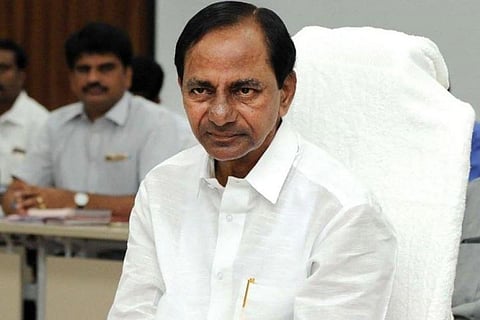

The Greater Hyderabad Municipal Corporation (GHMC) poll results declared on Friday stunned the ruling Telangana Rashtra Samithi (TRS), which was confident of winning 100 seats. Particularly, in the divisions of LB Nagar, Hayathnagar and Saroornagar — the eastern part of the city, the TRS suffered a rout as votes went in favour of the BJP. Besides RK Puram, all 12 divisions in the eastern region, which were previously held by the TRS, have also voted for the BJP, leading to a popular narrative that areas affected by the recent floods reflected their anger against the TRS government through the ballot. In the floods that hit Hyderabad in October, several areas in LB Nagar were inundated with water.
The other reasons being cited are voters rejecting Congress turncoats. For instance, D Sudhir Reddy, the MLA of LB Nagar, won the seat on a Congress ticket in 2018 and joined the TRS later. Similarly, Education Minister Sabita Reddy had won from Maheshwaram on a Congress ticket and eventually joined the TRS. Both these MLAs failed to rally voters in the divisions falling under their constituency.
Analysts, who are yet to do a micro-study on each division and the demography, largely agree that not the floods, but a strong anti-TRS sentiment, led to the surge of the BJP, which won 48 out of the 150 seats —12 times the number of seats they won in the previous elections. In 2016, the party could win only a mere four seats.
Political analyst K Nageshwar Rao, rubbishing the dominant theory of flood-neglect says, “In BN Reddy Nagar in Hayathnagar, the TRS lost by just 30-odd votes. How do we explain that? So, it is rather an anti-incumbency wave against the TRS. The BJP of course could have capitalised on the flood-issue, but that is only a small factor. The BJP did very well in other areas, too.”
In BN Reddy Nagar, TRS candidate M Laxmi Prasanna lost the seat by a margin of just 32 votes. According to Nageshwar, the direct contest between the TRS and BJP cost the former heavily, and this was the party’s own doing, he says.
“By decimating the TDP and Congress, the TRS made it a direct contest between BJP and TRS. If it was a tri-contest, the votes would have split and there would have been a different scenario,” he says.
In the GHMC polls, out of the 149 seat results announced, TRS won 55 seats, BJP won 48, AIMIM won 44 and the Congress won just two. The Telugu Desam Party (TDP), which was previously a top challenger in united Andhra Pradesh, was vanquished from the contest.
Palwai Raghavender Reddy, another analyst detailing the demography of LB Nagar, Hayathnagar and Saroornagar says, “This is an area where majority of them are people who come from Telangana districts unlike Kukatpally (people with Andhra Pradesh origin live here). And it is evident that they are not happy with the TRS.” He adds, “Floods could only be one among the many things which worked against the TRS.”
Raghavender substantiates his theory by saying, “Were there floods in Dubbaka? Didn’t the BJP win there, too?” In the recently held Dubbaka Assembly bye-polls, a high-drama election, the BJP clinched a victory and successfully created a perception that they are the “alternative” to the TRS, replacing the Congress.
Besides the decimation of Congress and TDP, Nageshwar attributes the BJP’s meteoric rise to TRS chief K Chandrasekhar Rao non-confrontation style of politics with the BJP. “Except during elections, when KCR criticises the BJP, he otherwise remains mute to all their policies and in fact, supports them on many occasions. Politics doesn’t work like that. You can’t just oppose a party and their ideas only when there’s an election. It has to be an everyday battle.”